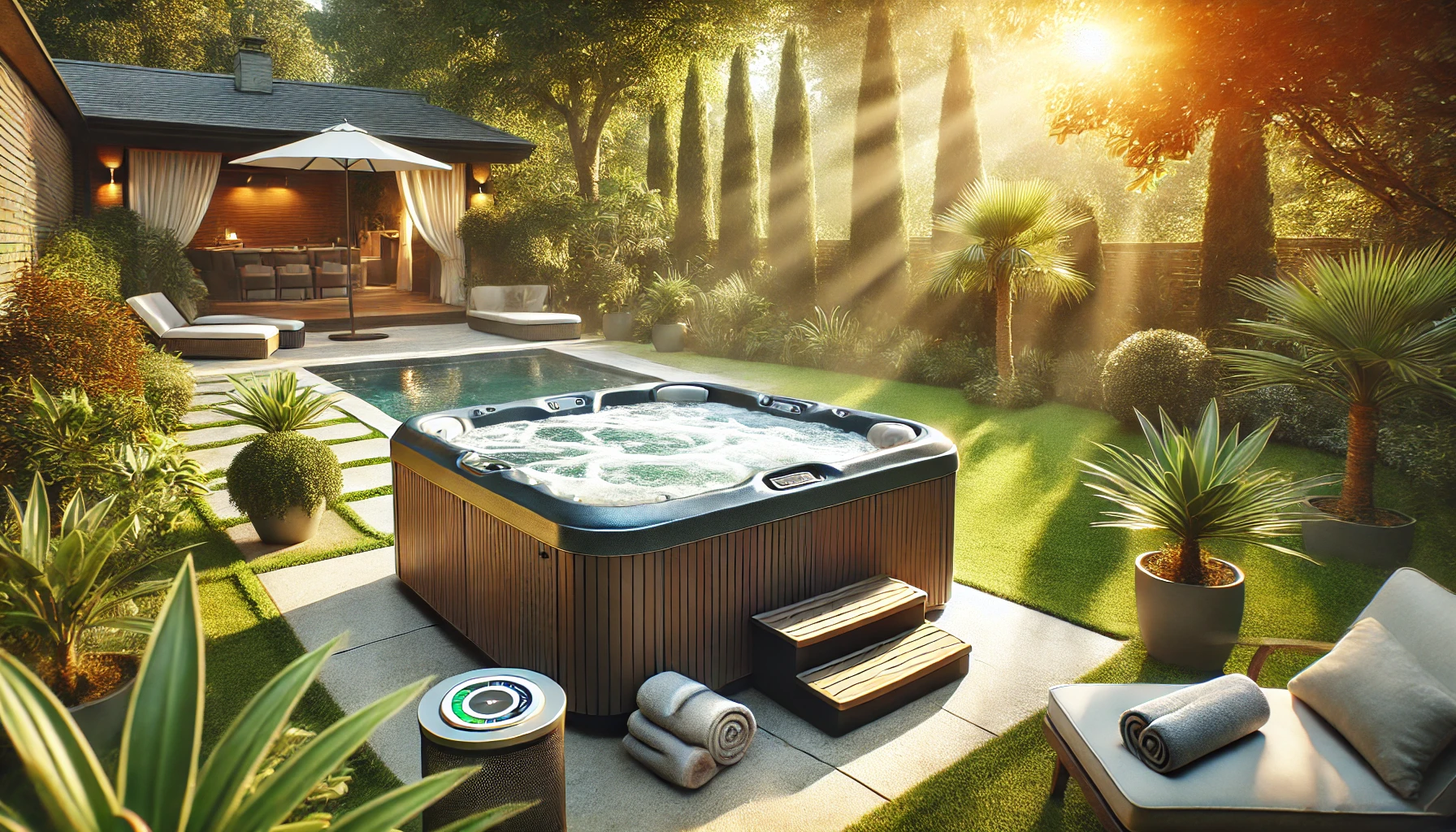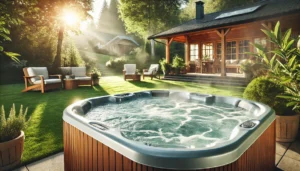Hey there, fellow hot tub enthusiasts!
I’ve been soaking in the world of spas for years now, and let me tell you, one question keeps bubbling up: “How long do these babies actually last?”
Well, grab your favorite pool noodle and let’s dive into the steamy details of hot tub longevity!
How Long Do Hot Tubs Last?
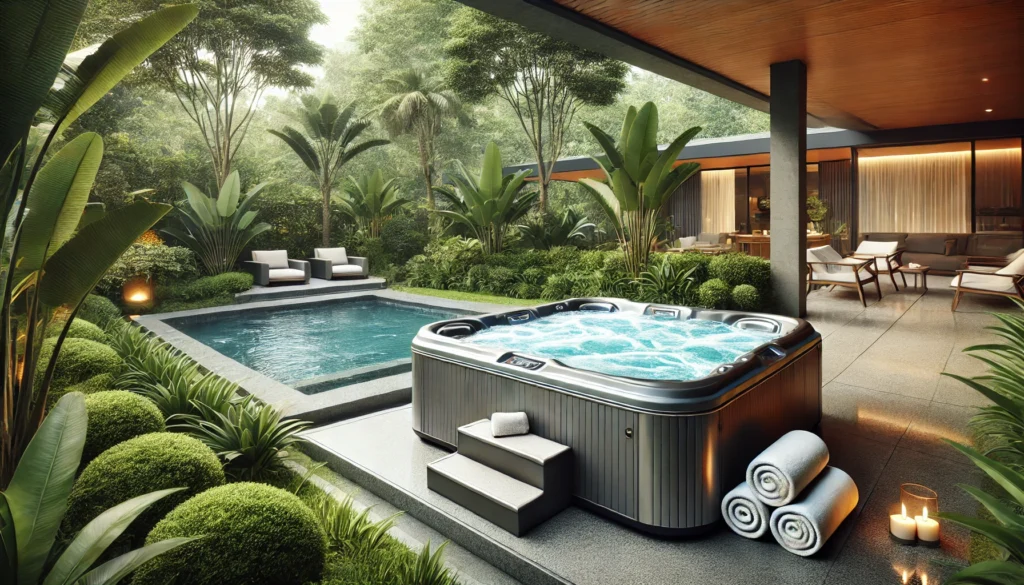
On average, hot tubs typically last between 10 to 20 years. Entry-level models might last 5-10 years, mid-range tubs often make it to 10-15 years, and high-end spas can potentially last 20 years or more.
However, the actual lifespan of a hot tub depends on various factors such as the quality of materials, frequency of use, maintenance, and environmental conditions.
With proper care and regular upkeep, some hot tubs have been known to last even longer than 20 years.
In the following sections, we’ll delve deeper into the factors that influence hot tub longevity and how you can extend your spa’s life.
The Average Lifespan of Hot Tubs
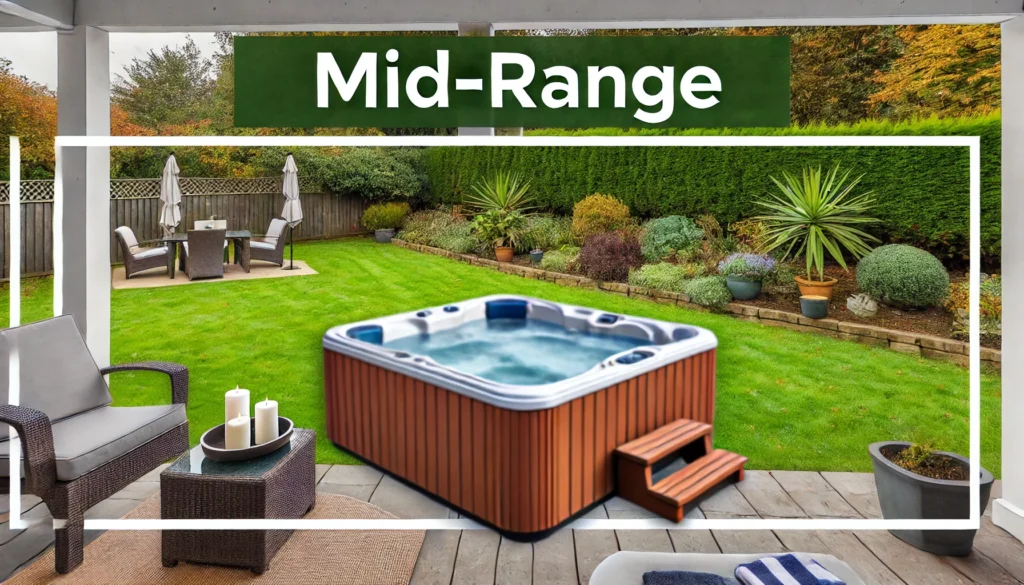
Alright, so here’s the deal – hot tubs aren’t exactly the Energizer Bunny, but they’re not one-hit wonders either.
On average, you can expect your little slice of backyard paradise to last anywhere from 10 to 20 years.
Yeah, I know, that’s a pretty wide range! But here’s the thing – I’ve seen some hot tubs kick the bucket after just 5 years, while others are still going strong after 30. It’s like my old gym teacher used to say, “It’s not about the years, it’s about the mileage!”
Now, don’t get me wrong, the lifespan of your hot tub isn’t just some random lottery. There are a bunch of factors that come into play.
It’s like baking a cake – you need all the right ingredients and a little bit of TLC to make it last. I remember when I got my first hot tub back in the day.
Man, I was so excited! I thought it would last forever. But let me tell you, I learned the hard way that these things need some serious attention if you want ’em to stick around.
Let’s break it down a bit. Your typical entry-level hot tub? You might be looking at 5-10 years if you’re lucky.
Mid-range models tend to hang in there for about 10-15 years. And those fancy-schmancy high-end spas? They could keep you soaking for 20 years or more!
But here’s a little secret – I’ve seen budget tubs outlast luxury models, and vice versa. It all comes down to how you treat ’em.
Kind of like cars, you know? A well-maintained clunker can outlast a neglected sports car any day of the week.
Factors That Affect Hot Tub Durability
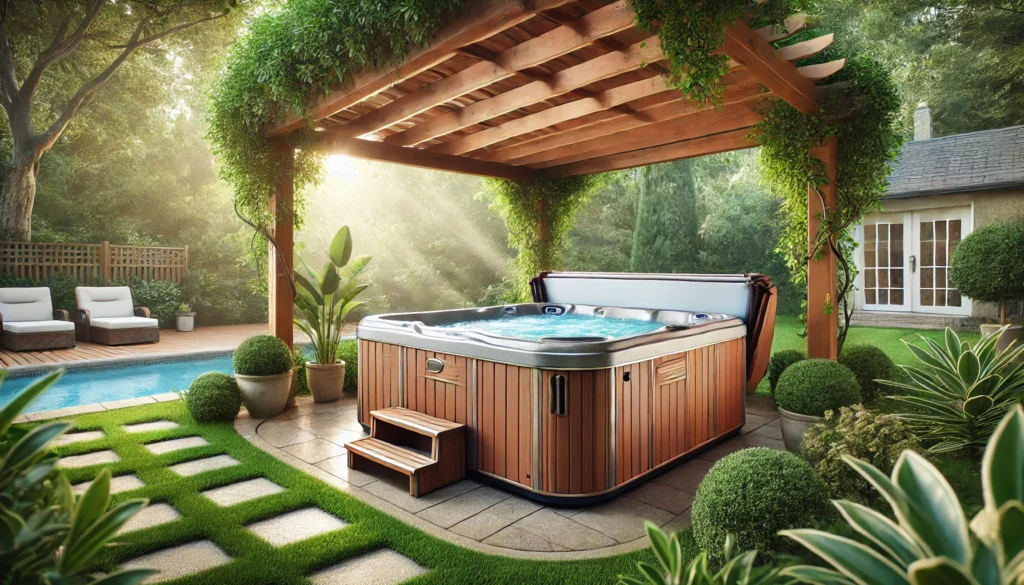
So, what’s the secret sauce to a long-lasting hot tub? Well, grab your notepad, ’cause I’m about to drop some knowledge bombs!
First up, we’ve got quality. And I’m not just talking about how fancy it looks – I mean the nitty-gritty stuff like materials and construction.
It’s like buying a car – you can get a shiny lemon that’ll break down in a year, or you can invest in something built to last. I once bought a cheap hot tub on sale, thinking I’d scored a sweet deal.
Spoiler alert: it was a total disaster! The pump gave out after six months, and don’t even get me started on the leaks.
Lesson learned: sometimes you gotta pay for quality. When it comes to materials, acrylic shells are the gold standard.
They’re durable, resist staining, and can take a beating from the elements. Some cheaper tubs use rotomolded plastic, which isn’t bad, but it’s not gonna win any longevity contests.
And the cabinet? Go for synthetic wood if you can. It might not have the charm of real wood, but it’ll laugh in the face of rot and warping.
Next up is how often you use it and how well you take care of it. It’s like any relationship – the more love you give, the longer it’ll last.
I’ve got a buddy who uses his hot tub every single day (yeah, I’m a little jealous) and keeps it in tip-top shape. That thing’s been running smooth for 15 years now!
But here’s the kicker – where you live can make a huge difference too. If you’re in a place with harsh winters or scorching summers, your hot tub’s gonna have to work harder.
It’s like trying to run a marathon in flip-flops – doable, but not ideal. I learned this the hard way when I moved from sunny California to frosty Minnesota.
Let’s just say my poor hot tub wasn’t prepared for the polar vortex! Climate plays a bigger role than you might think.
In areas with high humidity, you’re battling mold and mildew. Dry climates? You’re constantly topping up water levels.
And don’t even get me started on coastal areas – salt air can corrode components faster than you can say “beach party”. But it’s not all doom and gloom!
With the right precautions, you can weather any storm. Proper insulation is key in cold climates.
I once added an extra layer of insulation to my tub, and boom! My energy bills dropped faster than a skinny dipper in ice water.
For hot climates, shade is your best friend. I rigged up a pergola over my tub, and it was like giving it a cool drink on a hot day.
Plus, it looks pretty swanky if I do say so myself!
Signs Your Hot Tub is Nearing the End of Its Life

Okay, so how do you know when your trusty hot tub is about to kick the bucket? Well, let me tell ya, it’s not always obvious.
Sometimes these things can be sneaky! First off, keep an eye out for performance issues.
If your jets are less powerful than a kid’s squirt gun, or if the water’s taking forever to heat up, that’s a red flag. I remember one time I thought my hot tub was dying because the jets were super weak.
Turns out, I just needed to clean the filters. D’oh!
But if you’ve cleaned everything and those jets are still weaker than my grandma’s handshake, you might have a pump problem. And let me tell you, replacing a pump ain’t cheap.
It’s like trying to replace the engine in your car – sometimes it’s just not worth it. Then there’s structural problems.
If you start seeing cracks in the shell or the cabinet’s falling apart faster than my New Year’s resolutions, it might be time to start shopping for a new tub. And don’t even get me started on leaks.
Nothing’s worse than waking up to find half your water’s disappeared overnight. Trust me, I’ve been there, and it ain’t fun!
I once had a small crack in my tub’s shell. Thought I could fix it with some DIY magic.
Long story short, I ended up with a geyser in my backyard and a very angry neighbor. Moral of the story? Some repairs are best left to the pros.
But here’s a sneaky one – keep an eye on your energy bill. If it’s suddenly skyrocketing faster than a SpaceX rocket, your hot tub might be working overtime to keep things running.
It’s like when your car starts guzzling gas – something’s probably not right under the hood. I had this problem a few years back.
My energy bill was through the roof, but the tub seemed fine. Turns out, the heater was on its last legs, working overtime to keep the water warm.
Replacing it wasn’t cheap, but it was way less painful than those monster energy bills. And let’s talk about the control panel.
If it’s acting glitchy, giving you weird error messages, or just plain not working, that’s a bad sign. It’s the brain of your hot tub, and when the brain goes… well, you know the rest.
How to Extend the Life of Your Hot Tub
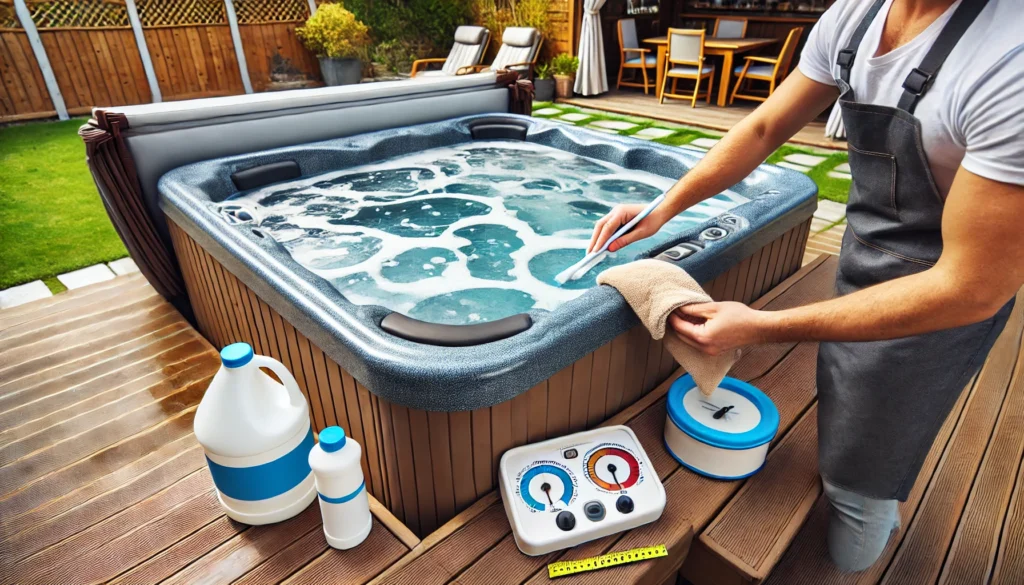
Now, I know what you’re thinking – “Alright, hot shot, how do I make this thing last?” Well, buckle up, ’cause I’m about to drop some knowledge that’ll make your hot tub last longer than my grandma’s fruitcake!
First things first – maintenance is key. And I’m not just talking about occasionally skimming leaves off the top.
Nah, I mean getting down and dirty with regular cleaning, checking the filters, and keeping an eye on all the moving parts. It’s like going to the dentist – nobody really wants to do it, but it’ll save you a world of hurt in the long run.
Here’s my weekly hot tub maintenance routine:
- Test the water (I do this 2-3 times a week)
- Skim any debris off the surface
- Wipe down the waterline with a soft cloth
- Check and clean the filters if needed
And once a month, I do a deep clean. Drain the tub, scrub it down, and give those filters a thorough cleaning.
It’s a pain in the butt, but trust me, it’s worth it. Next up, chemical balance.
This one’s tricky, and I’ll be honest, I’ve messed it up more times than I care to admit. But getting it right is crucial.
Too much chlorine, and you’ll feel like you’re soaking in a pool. Too little, and… well, let’s just say you don’t want to know what’s growing in there.
Invest in some good test strips and check your levels regularly. Your future self will thank you!
Here’s a quick rundown of the key chemical levels you need to keep in check:
- pH: 7.2-7.8
- Alkalinity: 80-120 ppm
- Chlorine: 1-3 ppm (if you’re using chlorine)
- Bromine: 2-4 ppm (if you’re using bromine)
I once let my pH levels get way out of whack. The water looked fine, but man, did it do a number on my skin!
I was itchier than a dog with fleas for a week. Lesson learned – always check your chemicals!
And don’t forget about the cover! I know it’s not the sexiest part of the hot tub, but trust me, it’s important.
A good cover is like a warm blanket for your tub – it keeps the heat in and the nasties out. I learned this the hard way when I left my old tub uncovered during a storm.
Let’s just say the cleanup wasn’t fun. Take care of your cover, and it’ll take care of you.
Clean it regularly, condition it to prevent cracking, and replace it every 5-7 years. And for the love of all that’s bubbly, don’t let it sag!
A sagging cover is about as useful as a chocolate teapot. Here’s a pro tip: invest in a cover lifter.
It’ll save your back and make you more likely to use the cover consistently. I got one a few years back, and let me tell you, it’s been a game-changer.
Now, let’s talk about the plumbing. Flushing your lines every few months can prevent buildup and extend the life of your pumps and heater.
There are plenty of line flush products out there, but I like to use a mix of white vinegar and water. It’s cheap, effective, and doesn’t leave any nasty chemical residue.
And here’s something a lot of people forget – your hot tub needs a break too! If you’re not using it for a while, don’t just let it sit there.
Drain it, clean it, and cover it up tight. It’s like putting your car in storage – a little prep work can prevent a lot of headaches down the road.
When to Replace vs. Repair Your Hot Tub
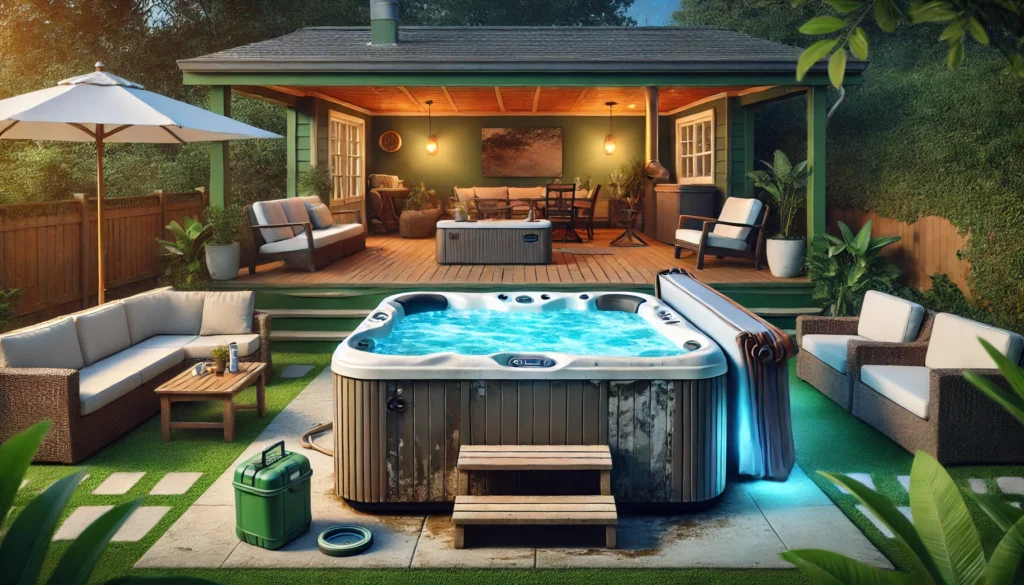
Alright, so your hot tub’s seen better days. The big question is – do you fix it up or kick it to the curb?
Well, it’s not always an easy decision, but I’ve got some tips to help you out. First, consider the costs.
If the repair bill is starting to look like a down payment on a new car, it might be time to cut your losses. I once spent a small fortune trying to fix an old tub, only to have it break down again a month later.
Talk about frustrating! Here’s a general rule of thumb I like to use: if the repair costs more than 50% of the price of a new tub, it’s probably time to replace.
But it’s not just about the money – you gotta factor in the age of the tub and the likelihood of future problems. Age is another factor.
If your tub’s old enough to vote, it might be time to let it retire. Technology’s come a long way, and newer models are often more energy-efficient and have cooler features.
It’s like upgrading from a flip phone to a smartphone – once you make the switch, you’ll wonder how you ever lived without it. But here’s the thing – sometimes an old tub just needs a little TLC to get back in fighting shape.
I’ve seen 20-year-old tubs that run better than some new ones. It all comes down to how well it’s been maintained and what exactly is wrong with it.
If you’re dealing with a minor issue like a worn-out pump or a leaky jet, that’s usually worth fixing. But if you’re looking at multiple problems, especially with the shell or electrical systems, it might be time to say goodbye.
And let’s not forget about those sweet, sweet new features. Modern hot tubs come with all sorts of bells and whistles – LED lights, built-in sound systems, even Wi-Fi connectivity!
It’s like going from a bicycle to a Tesla. I recently helped a friend decide whether to repair or replace her old tub.
It was a tough call, but in the end, we crunched the numbers and realized a new, energy-efficient model would actually save her money in the long run. Plus, she got a sweet saltwater system that’s been a total game-changer for her sensitive skin.
In the end, it’s all about weighing the pros and cons. Sometimes, saying goodbye to your old faithful is the best choice.
Other times, a little repair work can buy you a few more years of bubbly bliss. Trust your gut, do the math, and make the choice that’s right for you.
The Future of Hot Tubs

Now, I know we’ve been talking a lot about the past and present of hot tubs, but let me tell you, the future is looking pretty darn exciting! We’re seeing some seriously cool innovations that could change the game when it comes to hot tub longevity and enjoyment.
For starters, energy efficiency is getting better and better. I’m talking about tubs that use less power than your average coffee maker.
Seriously! There are models out there with ultra-efficient pumps and heaters that’ll make your electricity meter spin slower than a sloth on vacation.
And get this – smart technology is making its way into hot tubs. I’m talking about tubs you can control with your phone.
Imagine being able to fire up your hot tub on your way home from work, so it’s perfect when you arrive. It’s like living in the future, I tell ya!
But here’s the really cool part – self-cleaning hot tubs. Yeah, you heard me right!
There are systems out there that use UV light and ozone to keep the water clean with minimal chemicals. It’s like having a little robot janitor for your tub.
As someone who’s spent countless hours maintaining hot tubs, let me tell you, this is a game-changer. And let’s not forget about materials.
We’re seeing new, more durable materials that could seriously extend the lifespan of hot tubs. I’m talking about shells that resist fading and cracking, and cabinets that laugh in the face of weather damage.
Now, I know what you’re thinking – “All this fancy new tech must cost a fortune!” And yeah, some of it ain’t cheap. But here’s the thing – as these technologies become more common, prices are coming down.
Plus, when you factor in the money you’ll save on energy and maintenance over the years, it starts to look pretty attractive.
Conclusion
Whew! We’ve covered a lot of ground, haven’t we? From lifespan to maintenance, we’ve dipped our toes into every aspect of hot tub longevity.
So, how long do hot tubs last? Well, with the right care and a little bit of luck, you could be soaking in that bad boy for 20 years or more!
Remember, every hot tub is different, just like every hot tub owner. What works for me might not work for you, so don’t be afraid to experiment a little.
Find what works best for your tub, your lifestyle, and your budget. And hey, even if your current hot tub is on its last legs, don’t sweat it.
Think of it as an opportunity to upgrade to something even better! Who knows, maybe your next tub will have features we haven’t even dreamed of yet.
Flying hot tubs, anyone? Before I sign off, I want to remind you all to stay safe out there.
Hot tubs are awesome, but they can be dangerous if not used properly. Always follow the manufacturer’s guidelines, keep an eye on the temperature, and never, ever soak alone after a few too many brewskis.
Trust me on that one! So, what’s your hot tub story?
Have you nursed an old tub back to health, or are you eyeing up a shiny new model? Drop a comment below and let me know!
And if you’ve got any hot tub hacks of your own, share ’em with the class. After all, we’re all in this bubbling community together!
And remember, whether your hot tub lasts 5 years or 25, the most important thing is the memories you make in it.
